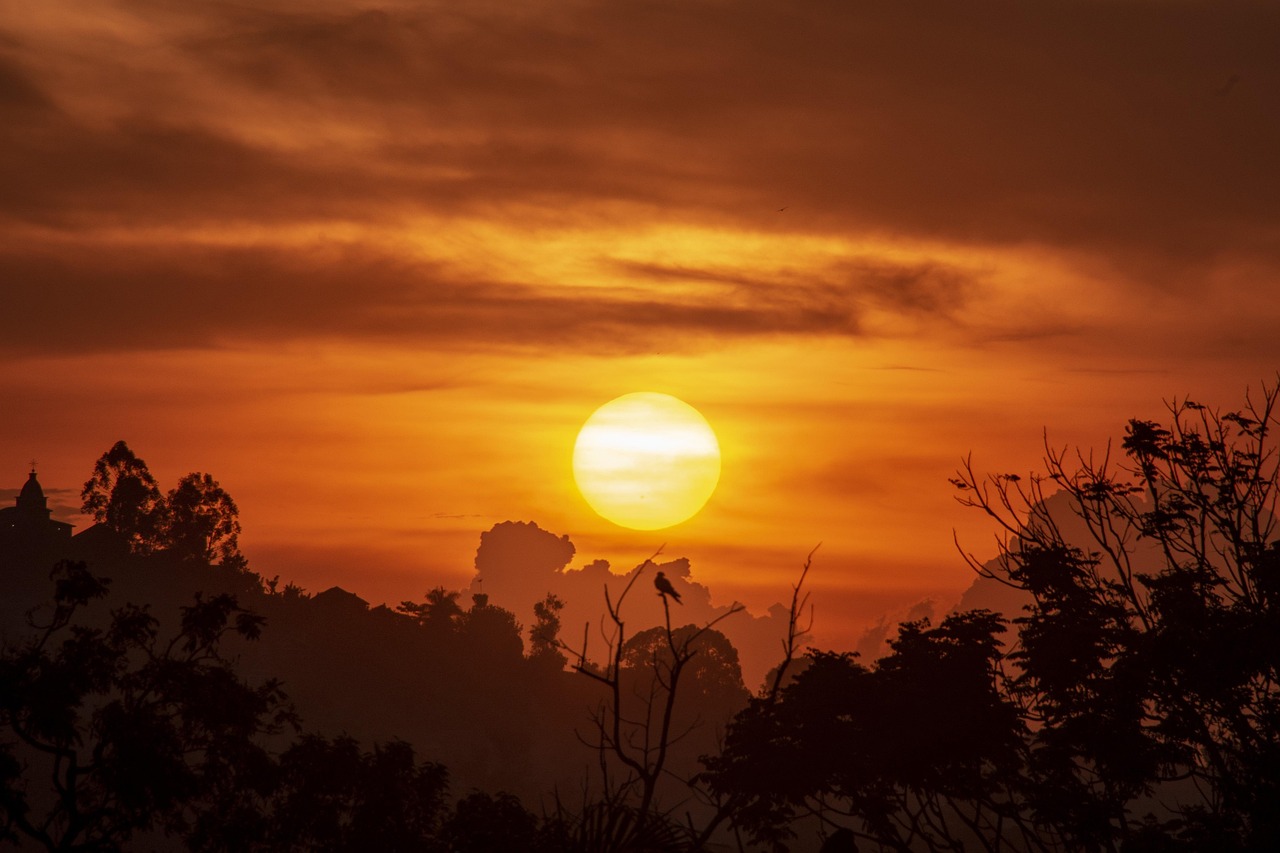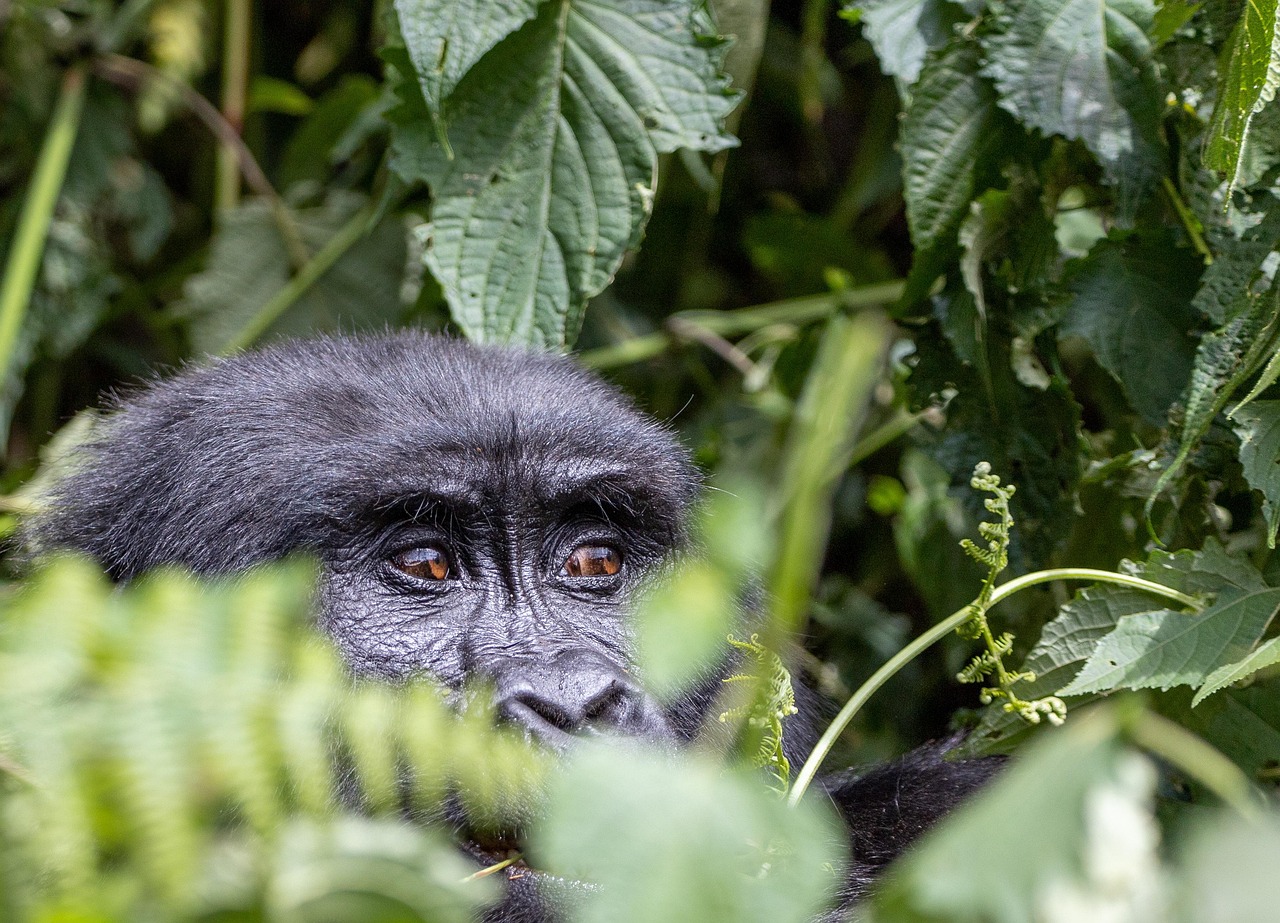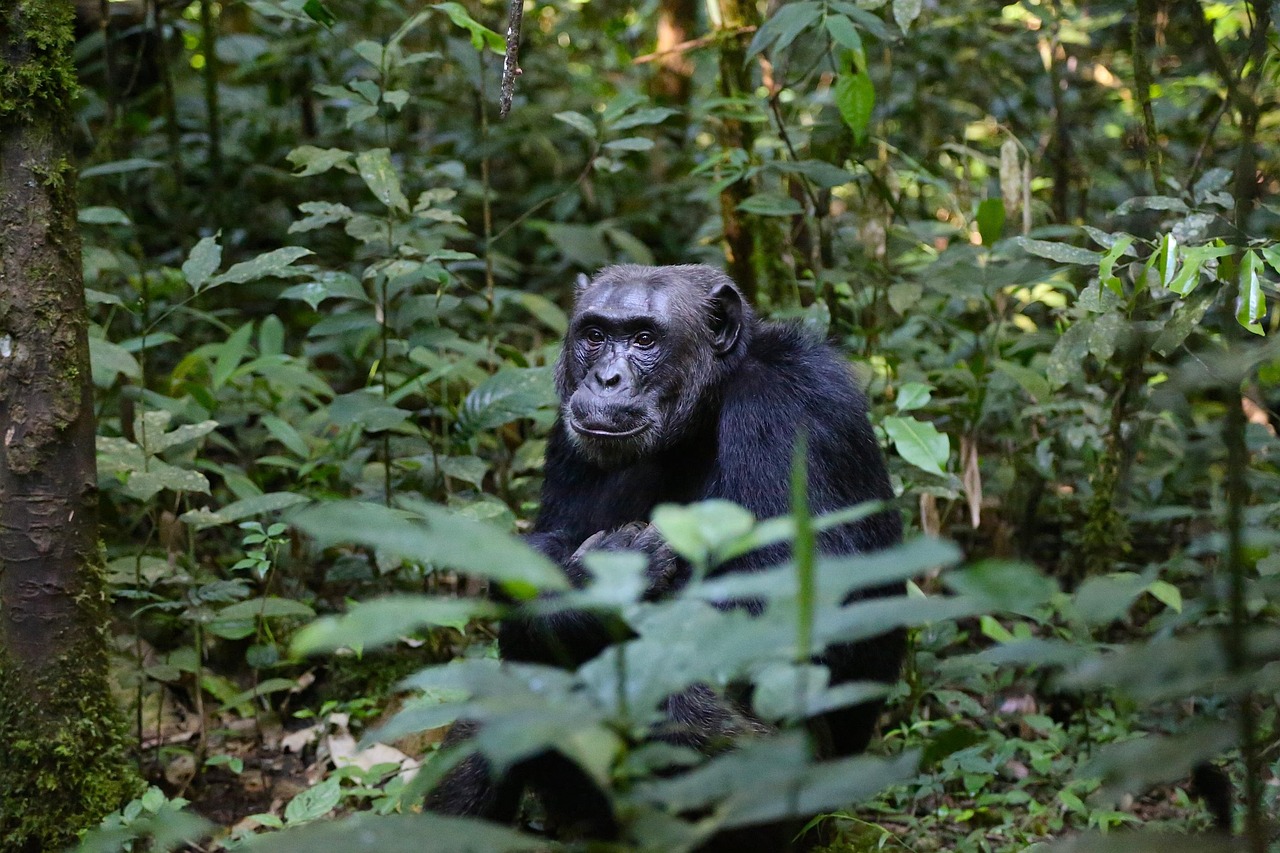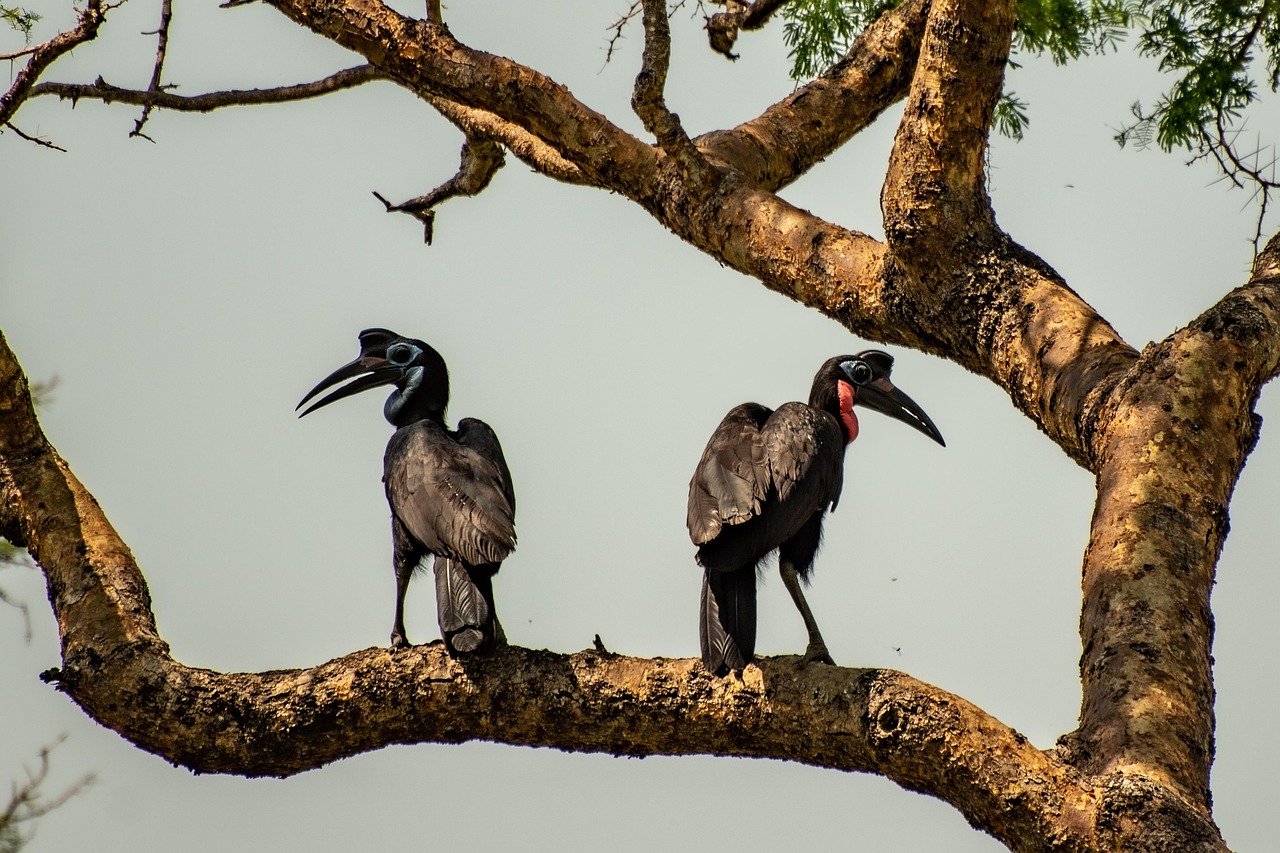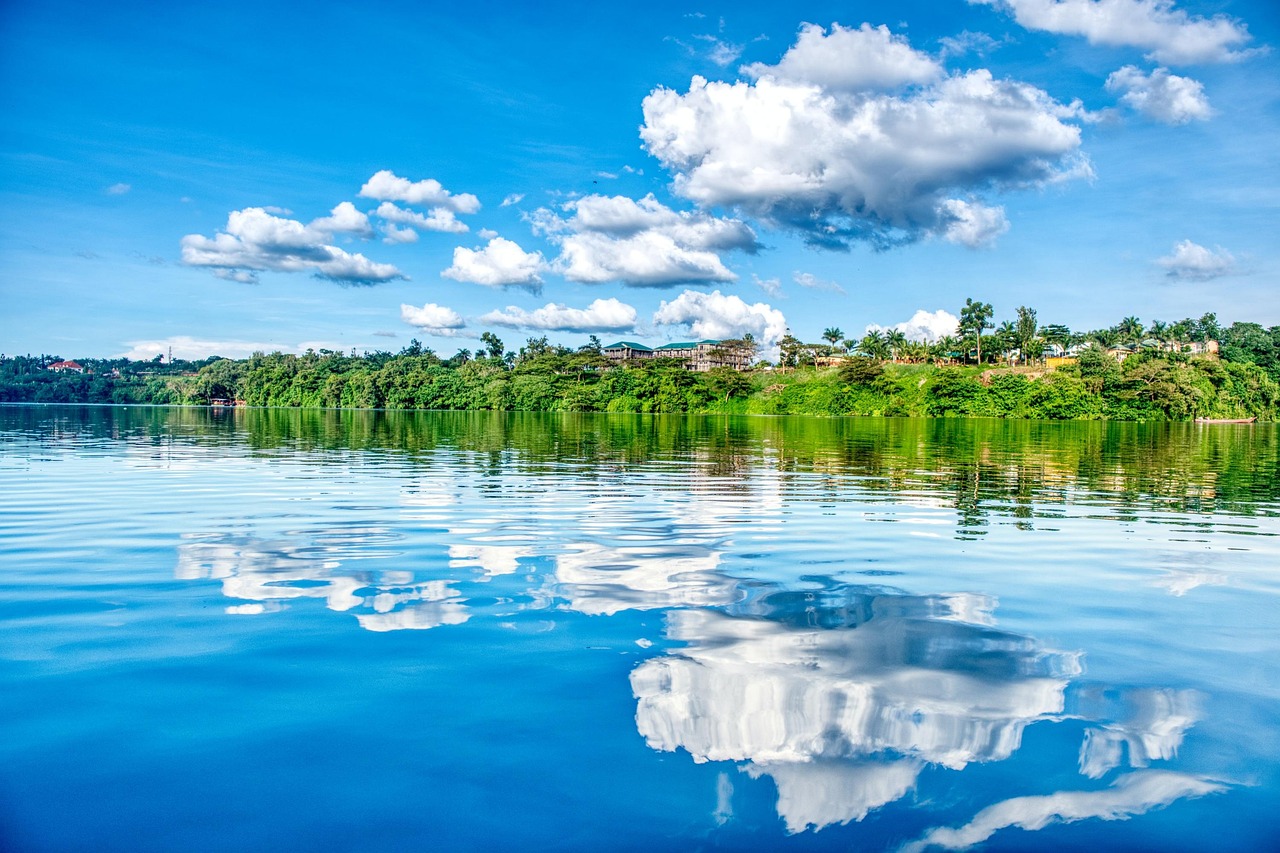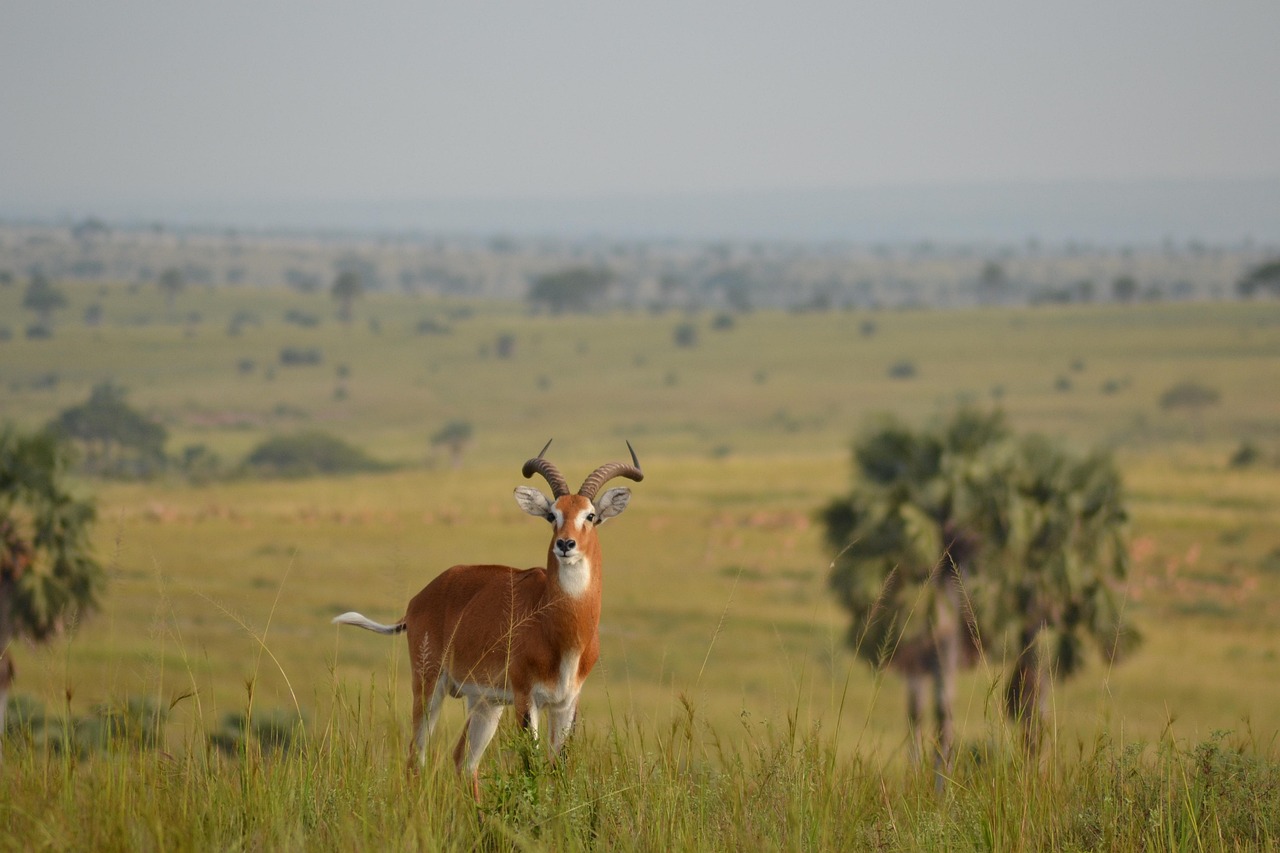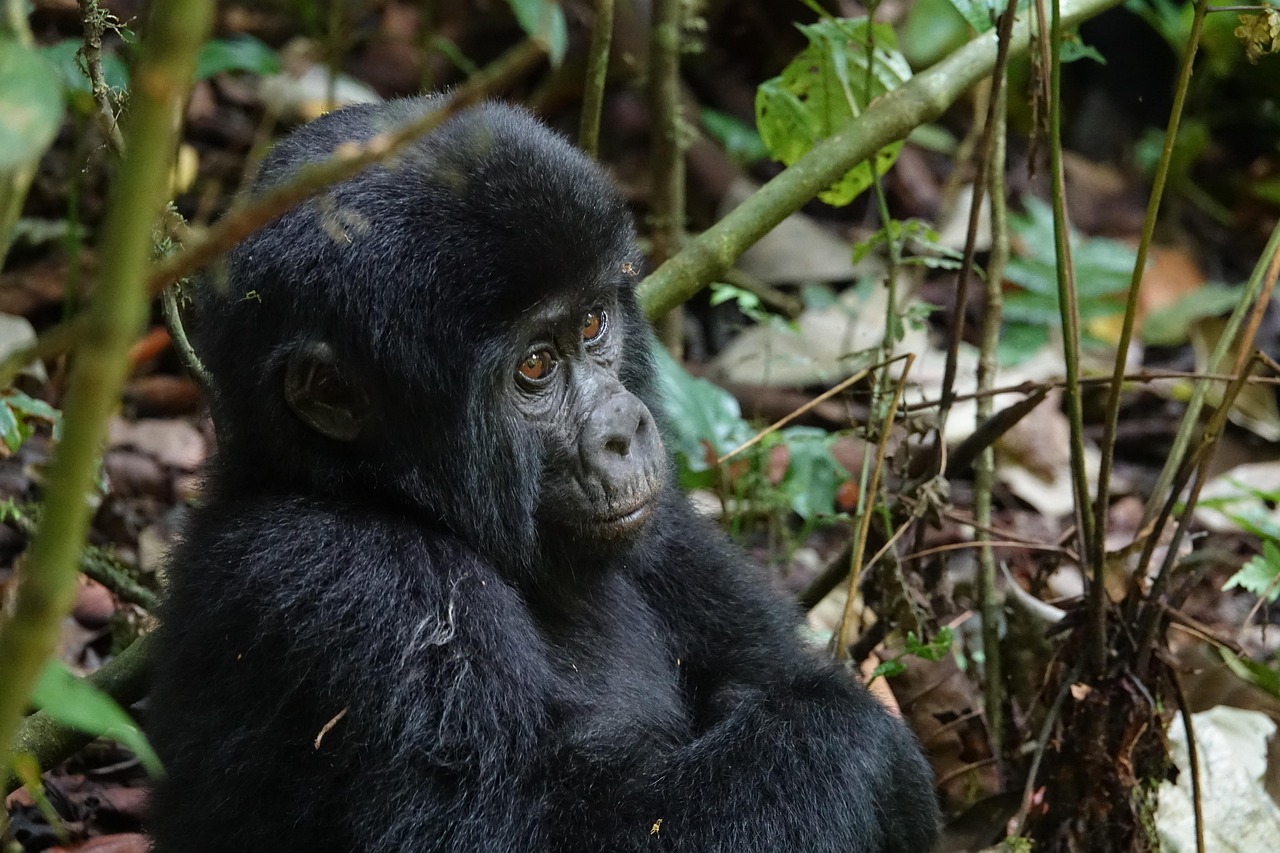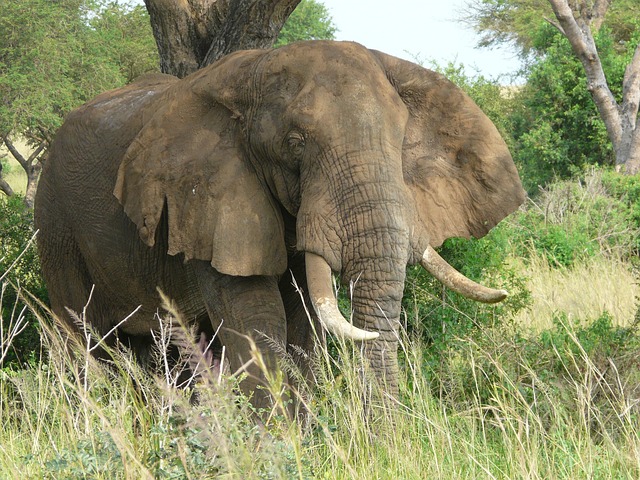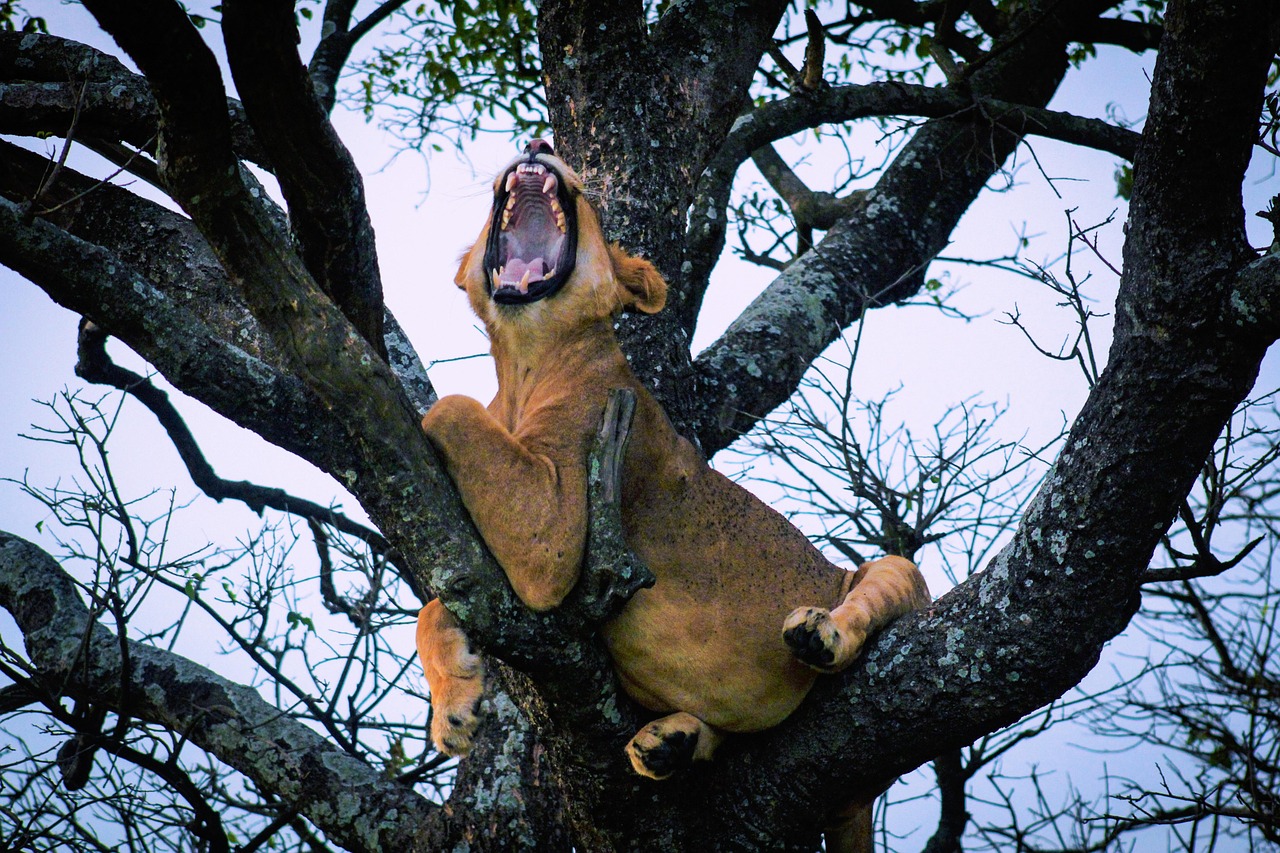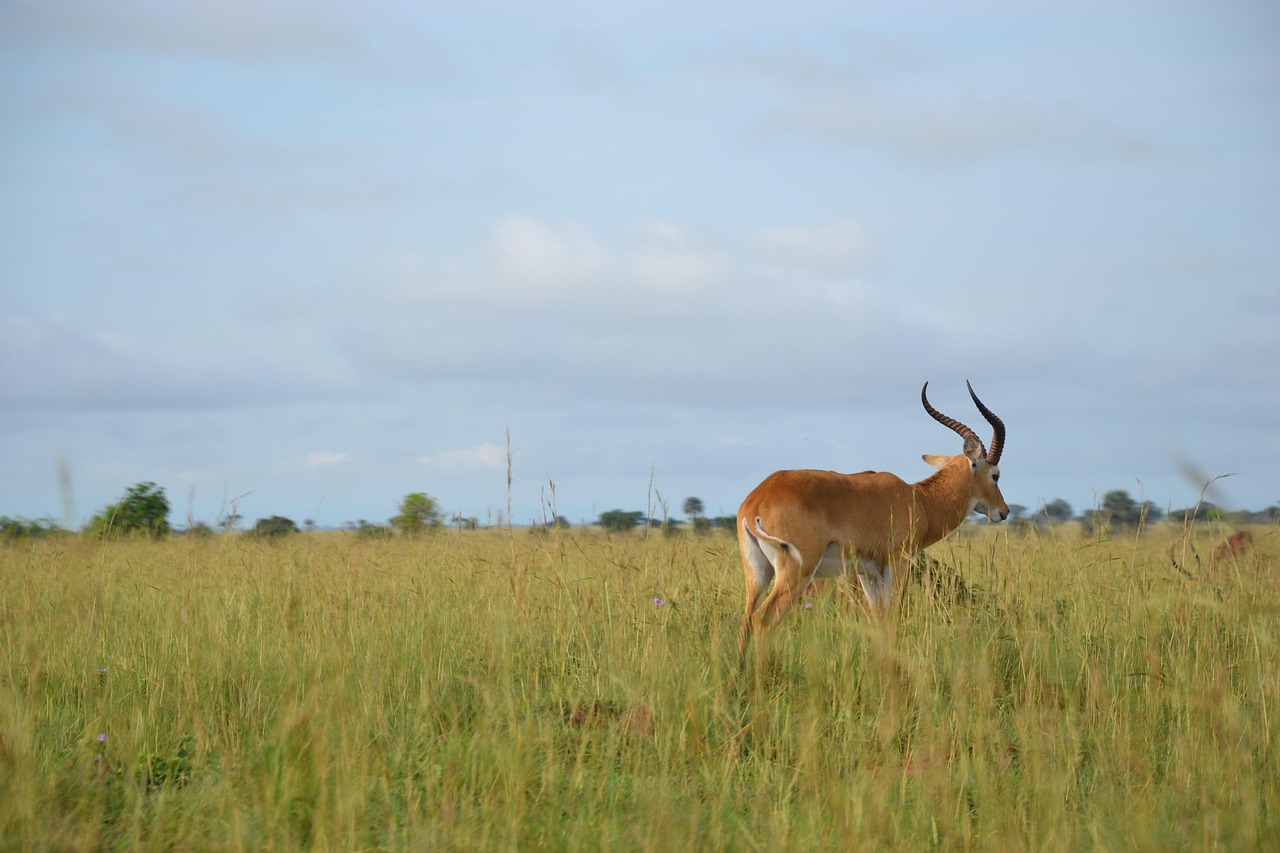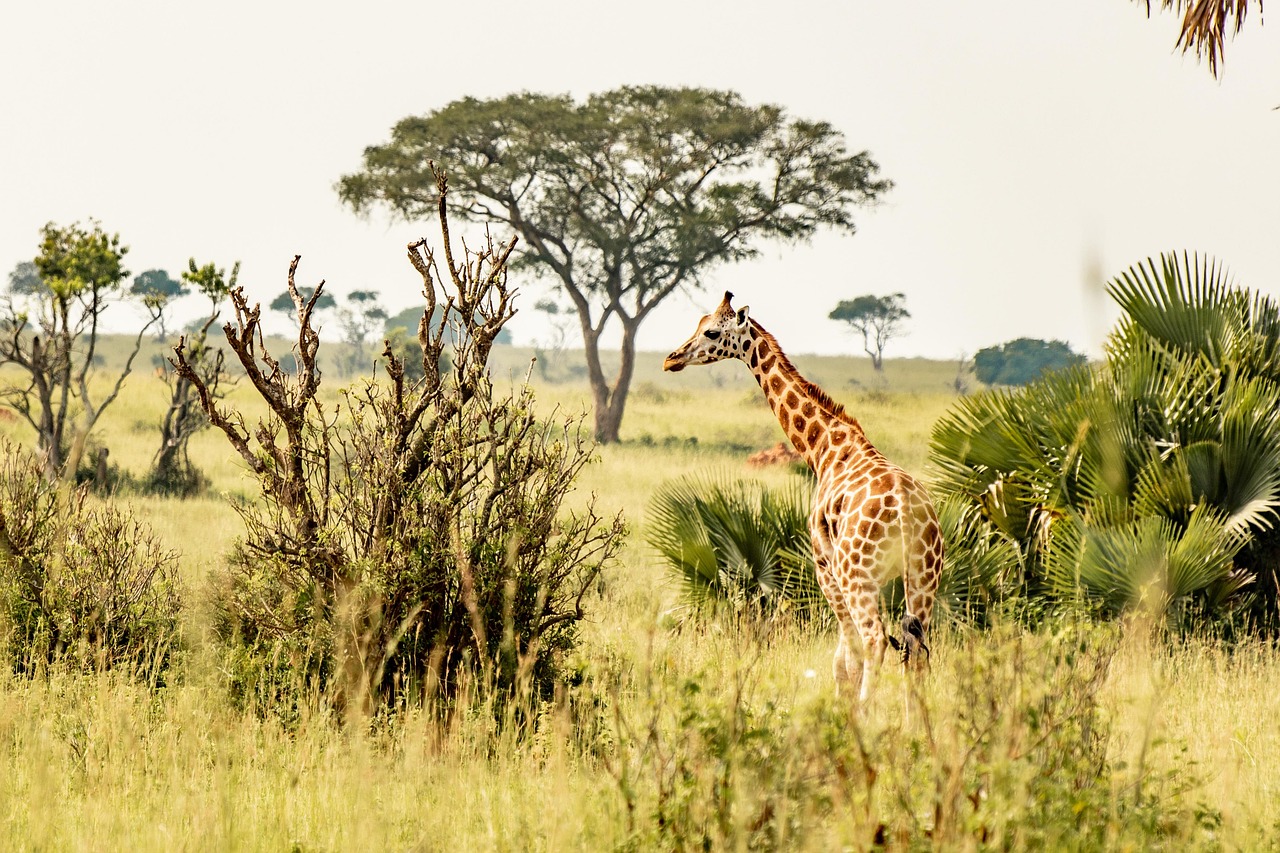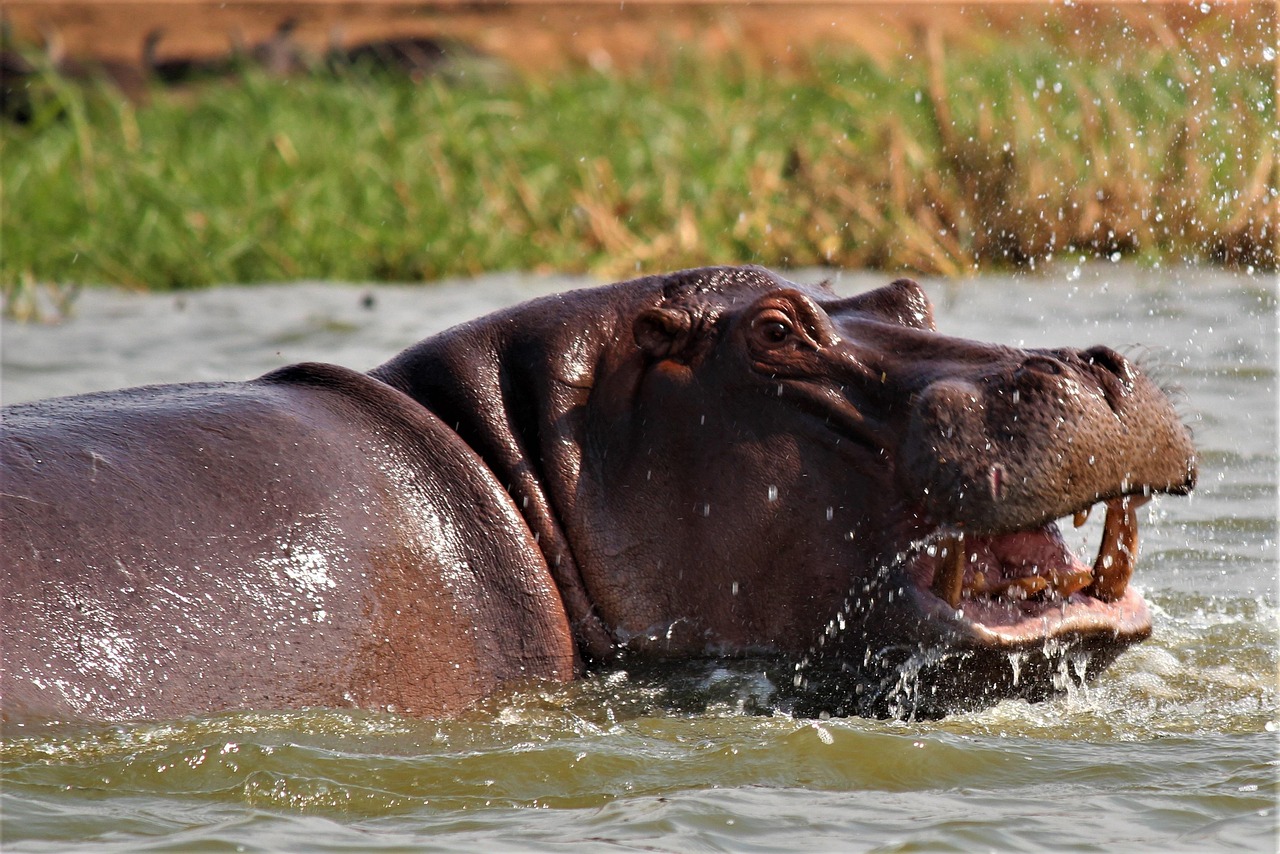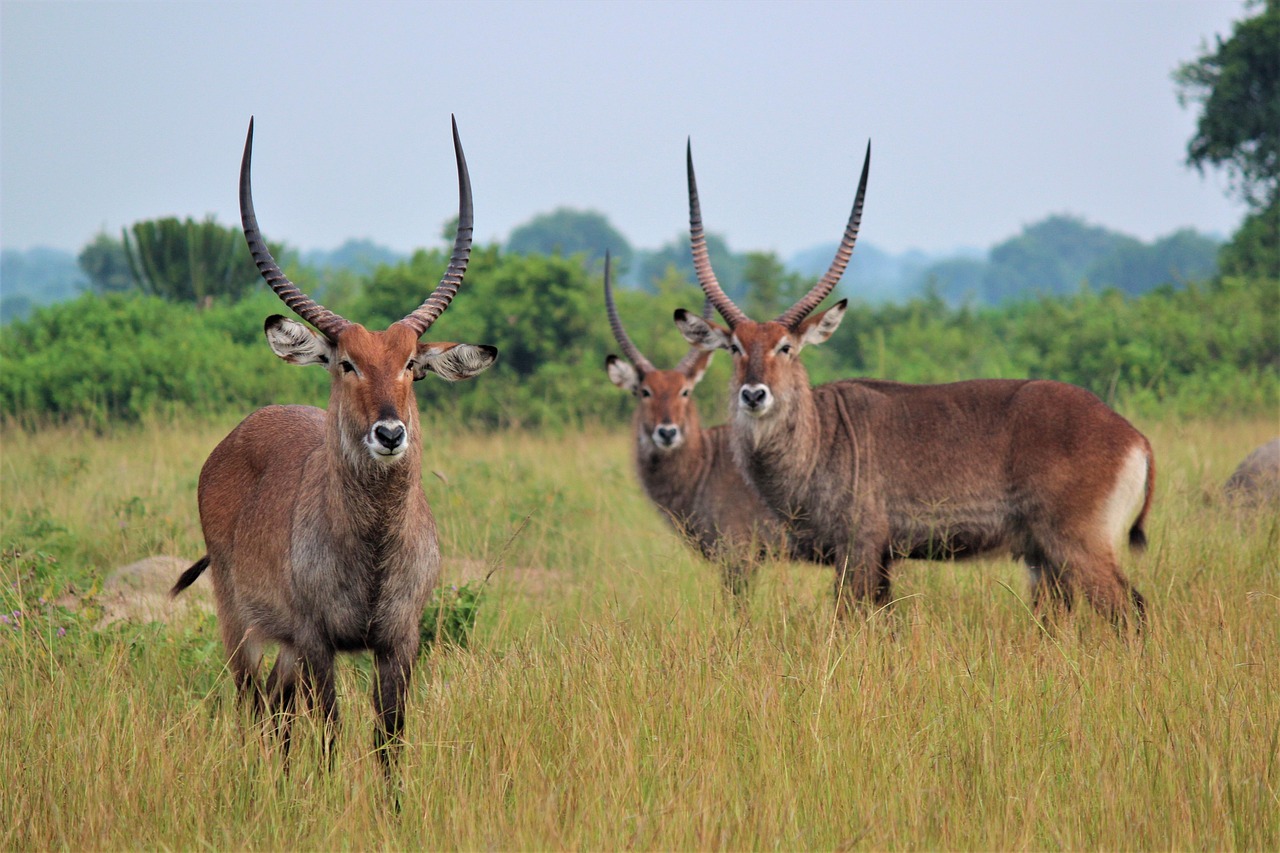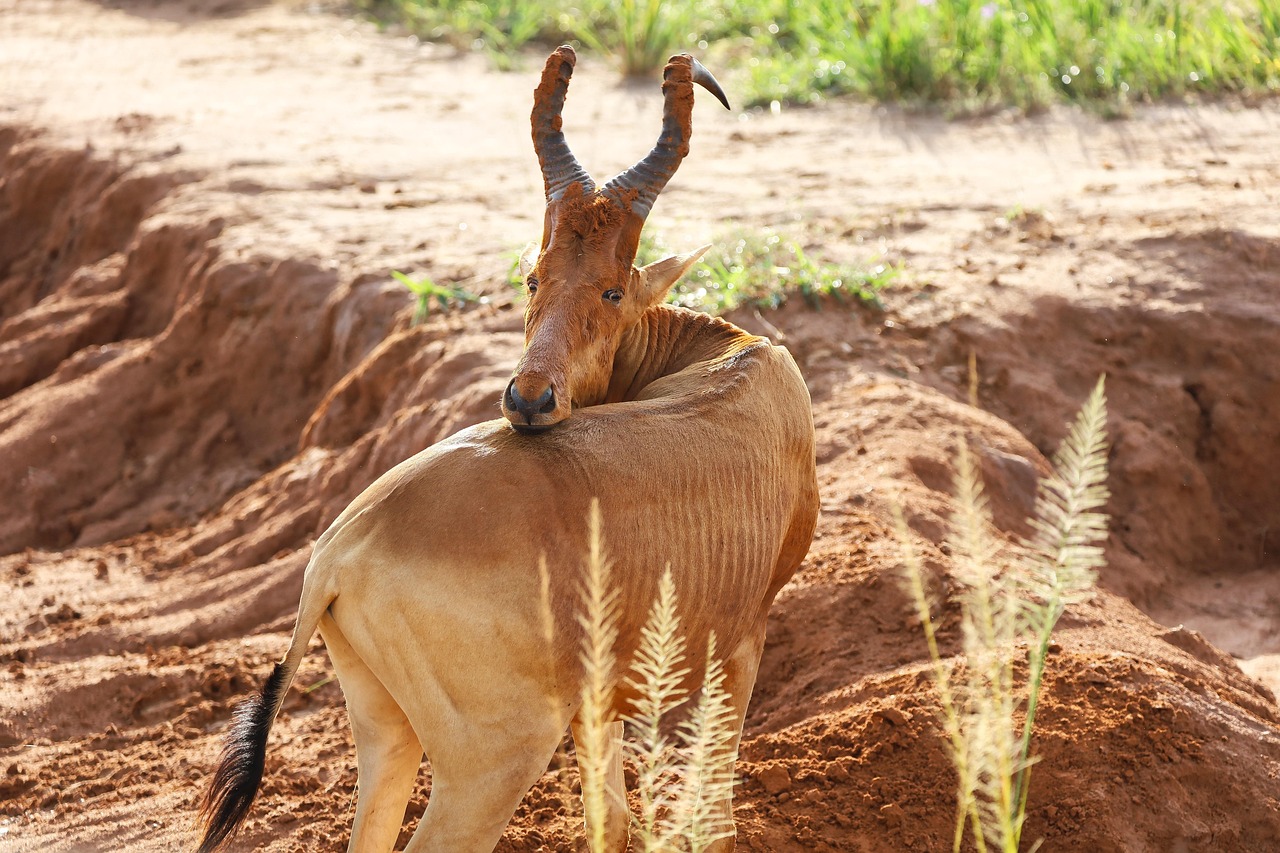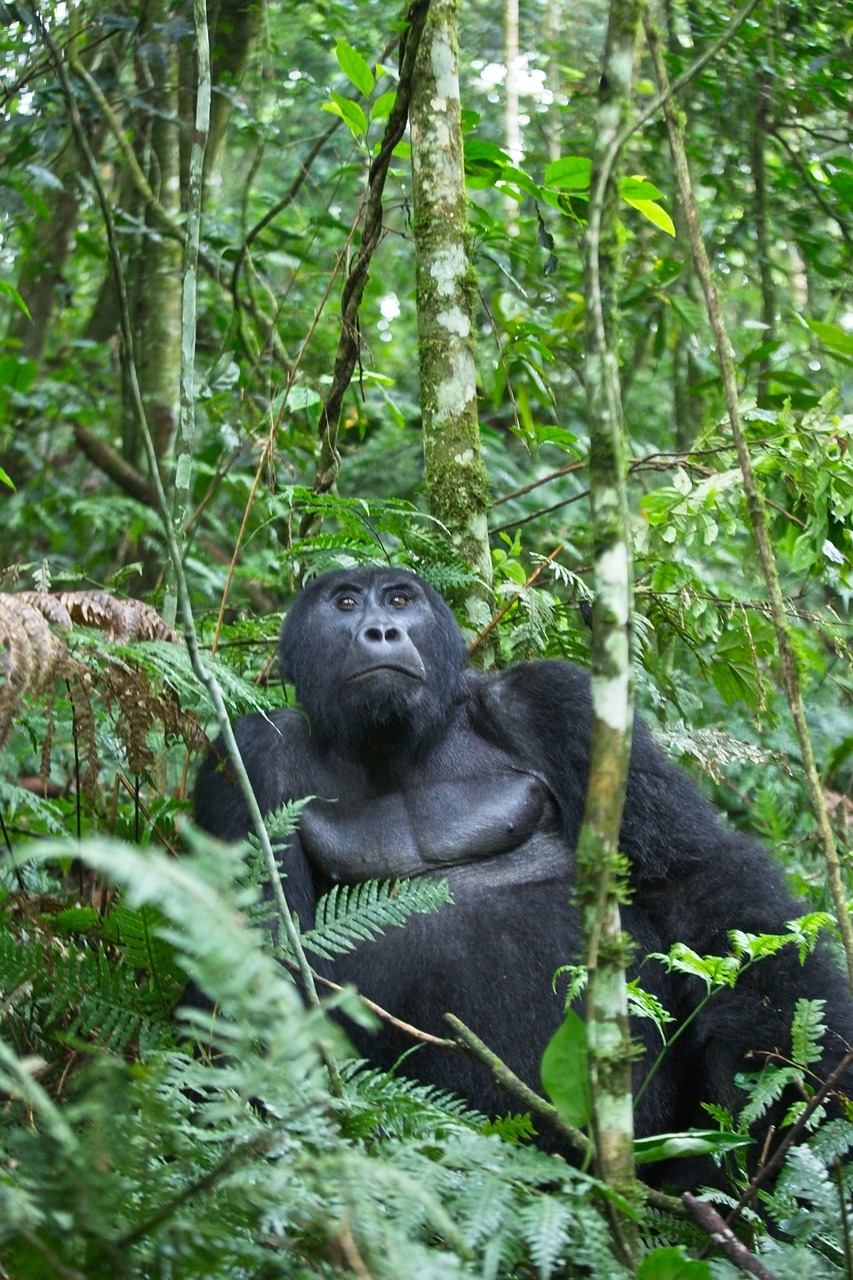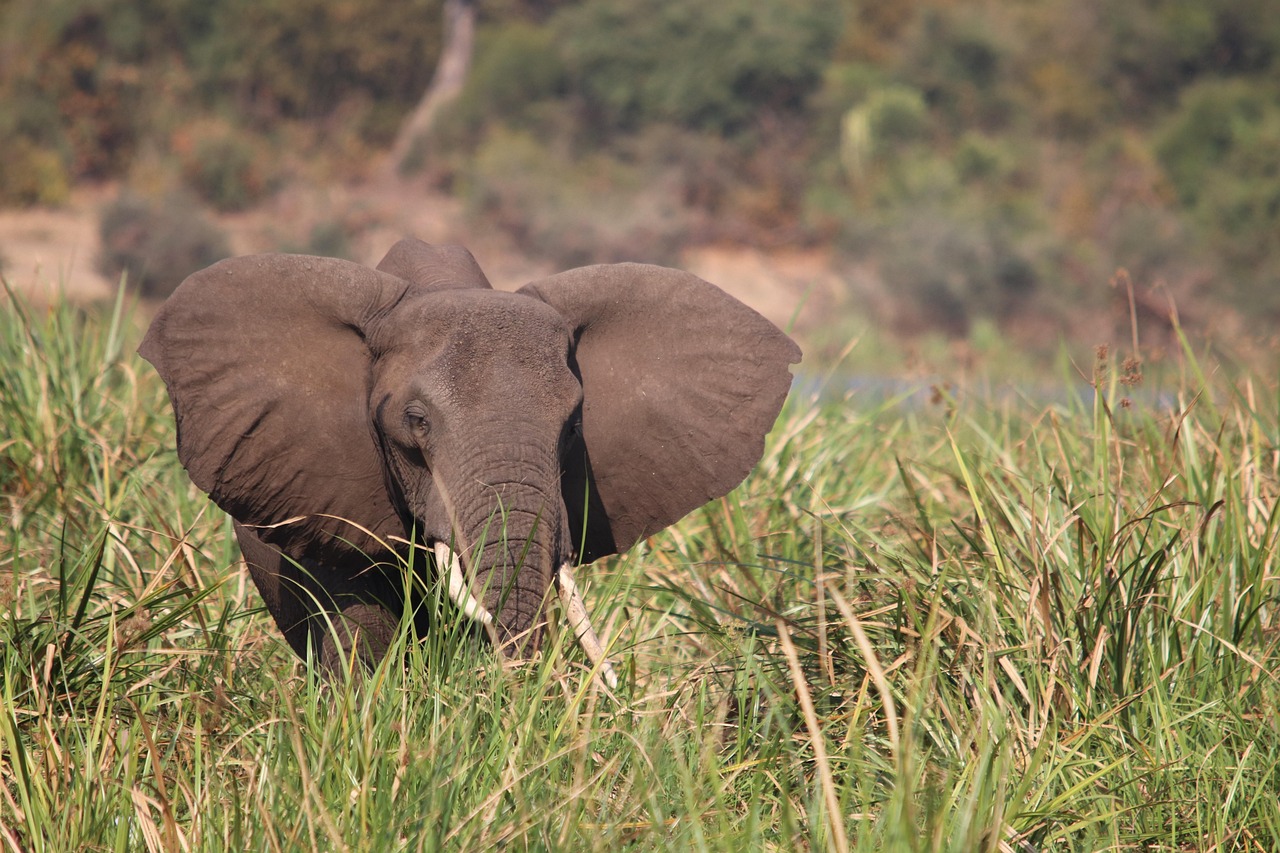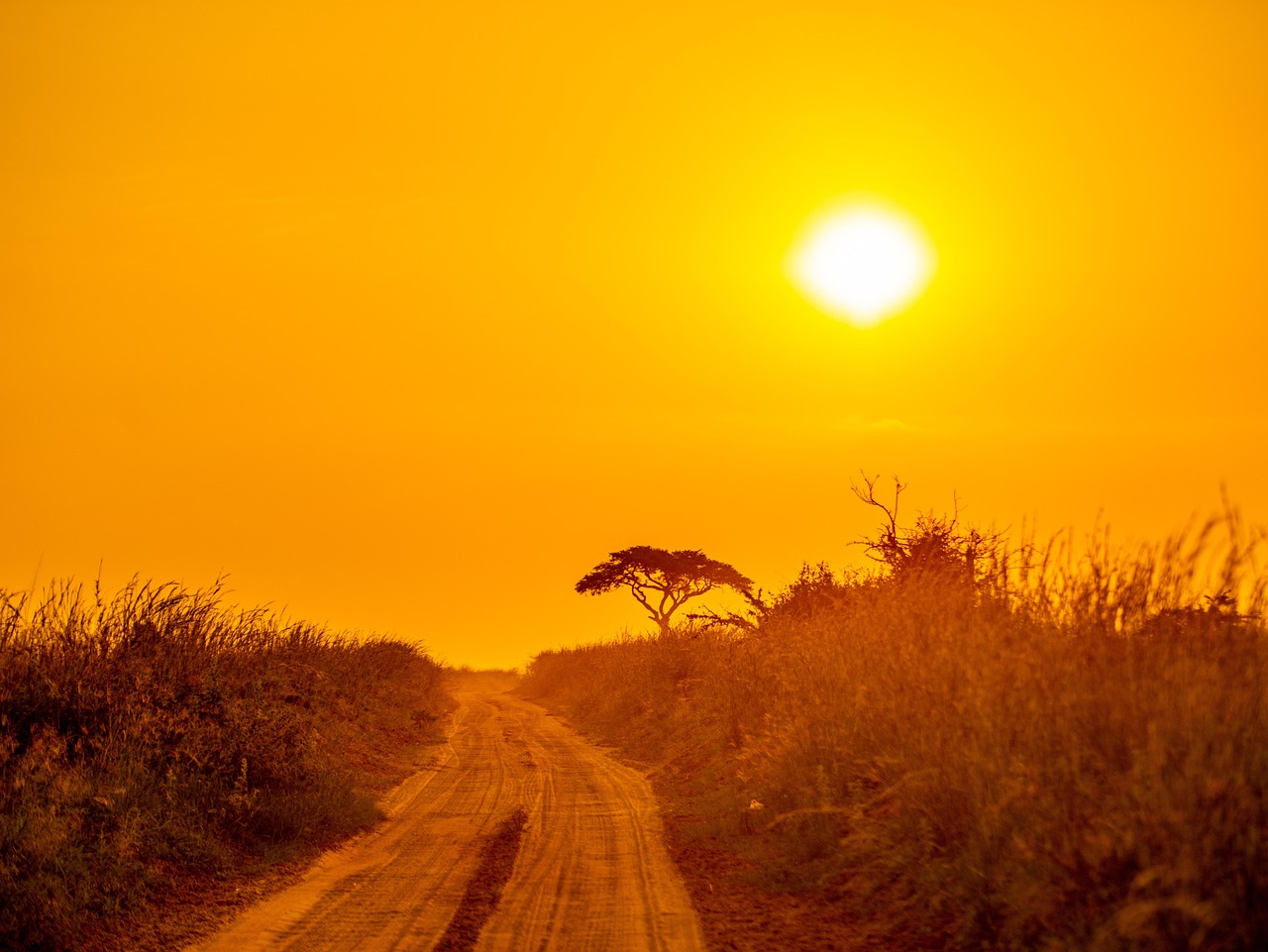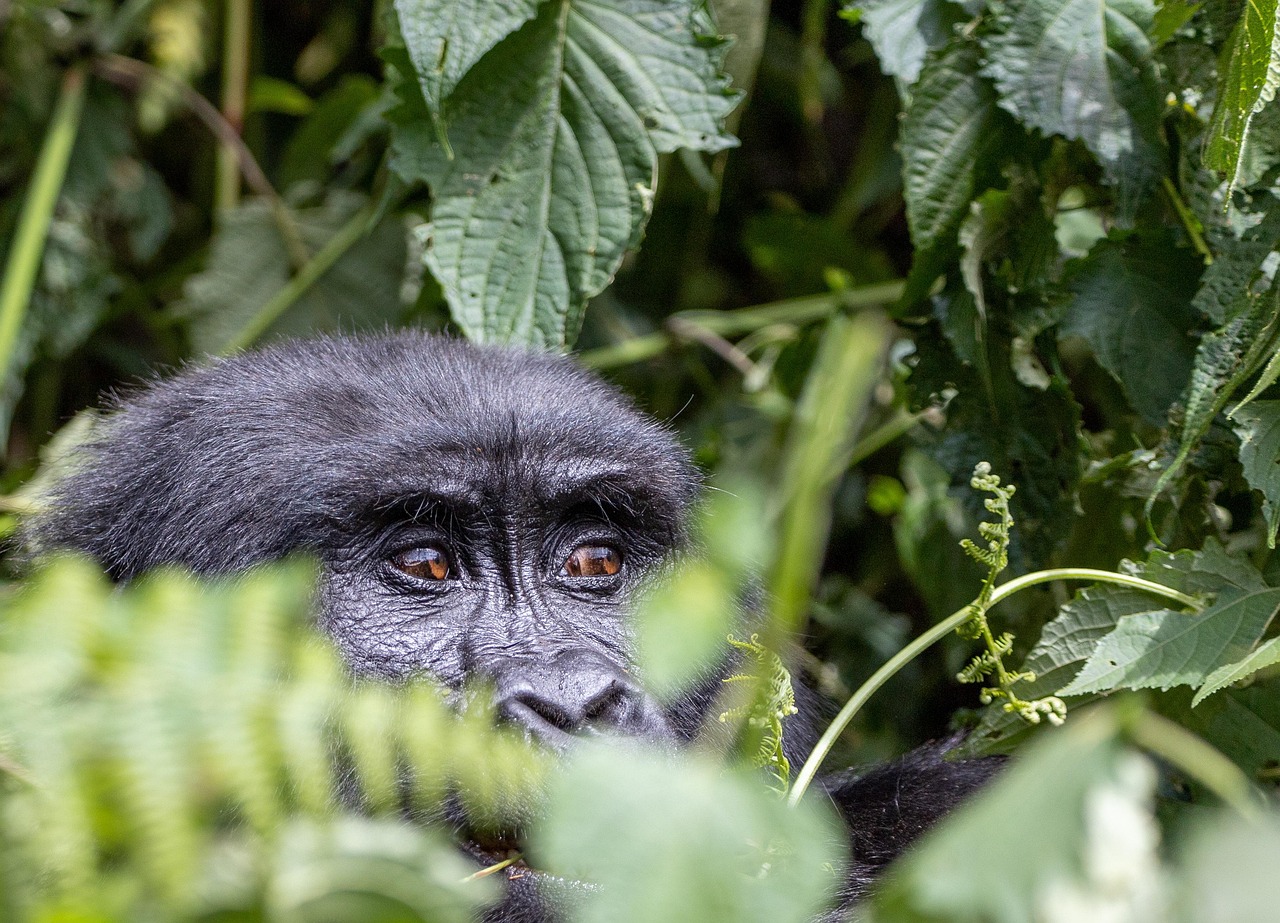
Uganda
Everything you need to know about going to Uganda for a safari. A complete travel guide.Uganda
Overview
A Complete Travel Guide to Uganda.
Everything you need to know before going to Uganda for a safari.
Uganda offers a compact yet richly diverse safari destination featuring world‑renowned primate trekking, Big Five savannah wildlife, and immersive water‑based wildlife experiences. Journey through misty rainforest in search of mountain gorillas in Bwindi Impenetrable National Park, track chimpanzees in Kibale Forest, and experience river cruises on the Kazinga Channel in Queen Elizabeth National Park—where hippos, elephants and crocodiles gather at the water’s edge. Explore Murchison Falls National Park, where the Nile thunders through a narrow gorge, and enjoy classic game drives across open plains for elephants, lions and buffalo. With abundant birdlife, cultural encounters and friendly service, Uganda presents a varied and accessible East African safari in a relatively small travel radius. Best visited during the drier months (June–August and December–February), this destination offers year‑round access to gorilla permits and wildlife experiences.
Explore other countries:
Continue your safari planning journey across Africa’s top countries
Not sure if Uganda is your perfect fit? Click below to explore and compare other safari countries.
Safety
Everything you need to know about safety in Uganda
Uganda is generally safe for organised safari travellers, with well‑trained rangers, secure lodges, and guided experiences mitigating most risks. In cities like Kampala, common-sense precautions—such as avoiding poorly lit areas at night and guarding valuables—are enough.
Expert tip: Hire reputable guides, stay informed of local advisories, and keep belongings secure in urban areas.
A Deeper Understanding Of Safety In Uganda
Uganda’s travel advisory levels advise travellers to reconsider visits due to crime and terrorism risks, particularly near the DRC and South Sudan borders, the Karamoja region, and parts of western Uganda and Kampala. While terrorist incidents and armed robberies have occurred—most notably an attack in Queen Elizabeth National Park—such incidents are rare relative to organised safari areas. Tourist zones are patrolled by military or police, and enforcement is active in safari regions.
Travel to national parks (Bwindi, Queen Elizabeth, Murchison Falls, Kibale) is considered secure when using reputable tour operators, who coordinate secure transfers and guided field activities. Roads outside main routes can be rough; transfers are typically done in sturdy 4×4 vehicles to manage terrain safely.
In urban and town centres, travellers should guard against petty crime, scams, or drink‑spiking, especially in crowded venues. Using trusted transport services—like licensed taxis or ride‑hailing apps—is recommended. When visiting protest areas, avoid large crowds as demonstrations can turn volatile with forceful police responses.
While Uganda’s security environment includes areas of caution, the tourism infrastructure is robust, and safety protocols are standard in safari lodges and parks. Visitors with comprehensive travel insurance and situational awareness can experience Uganda’s wildlife and landscapes with confidence.
VISA
Everything you need to know about visas for travel to Uganda
Most travellers to Uganda need a valid e‑Visa before arrival, unless they come from a visa‑exempt country. Your passport must have at least six months' validity and one blank page for entry.
Use the following links to see your visa requirements when travelling to Uganda:
Expert tip: Apply for your e‑Visa at least five working days before departure and apply no more than three months before travel to avoid needing a re‑application.
A Deeper Understanding Of Visa Requirements For Uganda
Most international travellers must apply via Uganda’s Electronic Visa/Permit Application System, introduced in July 2016. Tourist e-Visas (single entry, up to 90 days) cost around USD 50. In contrast, multiple-entry visas (6–24 months) may cost up to USD 100–200, depending on duration. Citizens of East African Community (EAC) countries—including Kenya, Rwanda, Tanzania, Burundi, and South Sudan—and several other nations (e.g., Belize, Seychelles, Zambia) are visa-exempt for stays of up to 90 days.
You will need to upload a passport bio-data scan, passport-style photo, yellow fever certificate, travel itinerary or hotel booking, and in some cases, a police clearance or recommendation letter (for multiple-entry visas or business stays). Applications are typically processed within 2–3 working days, but submitting at least five working days in advance is advised.
Vaccinations
Vaccinations are needed to visit Uganda.
Travellers to Uganda aged one year and above must present a valid yellow fever vaccination certificate upon entry. It’s strongly recommended to be up‑to‑date on routine vaccines like MMR, tetanus, polio, hepatitis A, and hepatitis B.
- Vaccinations Required: Yellow fever (certificate mandatory for all travellers ≥ 1 year)
- Use the following link to find vaccination information for Uganda: https://skyteam.traveldoc.aero/
Expert tip: Receive your yellow fever vaccine at least 10 days before travel and carry the original yellow card
A Deeper Understanding Of Vaccination Requirements for Uganda
Besides the mandatory yellow fever vaccine, all travellers should ensure they are current on routine immunisations such as MMR (measles‑mumps‑rubella), tetanus‑diphtheria‑pertussis, polio, and hepatitis A. People who plan extended stays, work in healthcare, or frequent rural areas should also consider hepatitis B and meningococcal vaccines.
Malaria risk is widespread, so antimalarial tablets and mosquito precautions (repellent, nets, and protective clothing) are advised for nearly all visitors. Regional health risks—such as typhoid, rabies, and schistosomiasis—may apply depending on travel plans and should be discussed with a travel clinic. Timing matters: certain vaccines like yellow fever require administration at least 10 days before departure to become effective.
Weather and climate
Everything you need to know about weather and climate in Uganda
Uganda features a warm, tropical climate year-round, with two dry seasons (June–August and December–February) where skies are clearer and rainfall lighter. Wet seasons occur from March to May and from September to November, bringing periodic rain; even then, sunshine is frequent. Rainfall can occur at night or early morning.
Seasonal Breakdown:
- Summer: December to February sees daytime averages around 28 °C (82 °F) and lows near 16 °C (61 °F). Rainfall is moderate—typically 45–60 mm (1.8–2.4 in) per month. Plains and lower altitudes are hot, while highland regions remain mild.
- Winter: June to August offers slightly cooler conditions with highs around 27 °C (81 °F) and lows of 16 °C (61 °F). Rainfall is minimal—about 90–95 mm (3.5–3.7 in) per month—making roads easier and wildlife activity higher.
Expert tip: Schedule safari travel during the dry seasons (June–August or December–February) for best access to park roads, clearer game viewing, and more reliable gorilla‑trekking conditions.
A Deeper Understanding Of Weather And Climate In Uganda
Uganda’s equatorial position gives it stable temperatures, typically between 17 °C (63 °F) in high‑altitude areas and 25–28 °C (77–82 °F) in lower regions. Rainfall is concentrated in two bimodal wet seasons: long rains (March–May) and short rains (September–November). April is usually the wettest month.
Dry seasons from June to August and December to February offer clearer skies, most reliable road conditions, and ideal wildlife visibility. The long dry season (June–August) tends to be the driest, particularly in the south, while December–February remains warm but slightly wetter.
Regional climate variations: Western Uganda and highland parks—such as Bwindi—experience cooler nights and more rainfall year-round. Northern regions, including Murchison Falls or Kidepo Valley, have a single rainy season and generally hotter, semi-arid conditions. Temperatures at higher elevations can drop significantly, so layering is key.
Generally, June–August suits travellers seeking clear skies, dry roads and wildlife concentration, while December–February suits those wanting warmer, drier days in lower elevations. March–May and September–November can bring rain showers that refresh landscapes—but may limit travel in remote areas.
Table representing weather and climate in Uganda by month
🟢 Excellent weather | 🟡 Fair weather | 🟠 Hot or rainy conditions | 🔴 Unfavourable travel period
| Month | Avg Low (C/F) | Avg High (C/F) | Precipitation (%) | Rainfall (mm/in) | Rainy Days | Humidity (%) | UV Index |
|---|---|---|---|---|---|---|---|
| January | 16 °C / 61 °F | 28 °C / 82 °F | 10 % | 46 mm / 1.8 in | ~8 | ~60 % | 10 |
| February | 16 °C / 61 °F | 28.5 °C / 83 °F | 10 % | 47 mm / 1.9 in | ~7 | ~60 % | 11 |
| March | 16.5 °C / 62 °F | 28 °C / 82 °F | 30 % | 104 mm / 4.1 in | ~13 | ~70 % | 9 |
| April | 16 °C / 61 °F | 27.5 °C / 81 °F | 40 % | 150 mm / 5.9 in | ~18 | ~75 % | 8 |
| May | 16.5 °C / 62 °F | 27 °C / 81 °F | 35 % | 140 mm / 5.5 in | ~16 | ~75 % | 8 |
| June | 16 °C / 61 °F | 27 °C / 81 °F | 15 % | 93 mm / 3.7 in | ~12 | ~70 % | 9 |
| July | 16 °C / 61 °F | 26.5 °C / 80 °F | 15 % | 93 mm / 3.7 in | ~12 | ~70 % | 9 |
| August | 17 °C / 63 °F | 27 °C / 81 °F | 20 % | 122 mm / 4.8 in | ~15 | ~75 % | 9 |
| September | 17 °C / 63 °F | 28 °C / 82 °F | 30 % | 126 mm / 5.0 in | ~16 | ~75 % | 8 |
| October | 17.5 °C / 63.5 °F | 28 °C / 82 °F | 35 % | 157 mm / 6.2 in | ~18 | ~80 % | 8 |
| November | 17.5 °C / 63.5 °F | 28.5 °C / 83 °F | 30 % | 118 mm / 4.6 in | ~17 | ~80 % | 8 |
| December | 16 °C / 61 °F | 28 °C / 82 °F | 20 % | 64 mm / 2.5 in | ~10 | ~70 % | 9 |
When To Go
Everything you need to know about the best time to visit Uganda:
The best time to go is during the two dry seasons—June to August and December to February—when wildlife viewing and gorilla trekking are at their most accessible.
- High season: June to August, December to February
- Low season: March to May, October to November
Expert tip: Book your gorilla trekking permits and safari lodges 3–6 months in advance for dates in the high seasons when demand is highest.
A Deeper Understanding Of The Best Time To Visit Uganda
Uganda has two clear dry seasons, June–August and December–February, offering minimal rain, clear skies, and easier trekking conditions, especially for gorilla tracking in Bwindi and Mgahinga. During these months, wildlife is concentrated around shrinking water sources, increasing visibility on game drives at Queen Elizabeth, Murchison Falls, and other savannah parks.
The low seasons (March–May, October–November) bring heavier rains, lush landscapes, and fewer crowds—ideal for budget travellers and birdwatchers who enjoy vibrant greenery and newborn animals. Rain can lead to muddy trails and less reliable road conditions, but gorilla treks remain operational year-round. Birdwatchers will find exceptional species diversity from November to April, when migratory birds are present.
Table representing the best time to visit Uganda:
| Month | Weather | Wildlife Viewing | Birdwatching | Temperature |
|---|---|---|---|---|
| January | ☀️ | ✅✅✅ | 🐦🐦 | ☀️ |
| February | ☀️ | ✅✅✅ | 🐦🐦 | ☀️ |
| March | 🌧️ | ✅ | 🐦🐦 | ☀️ |
| April | ⛈️ | ✅ | 🐦🐦 | ☀️ |
| May | 🌧️ | ✅ | 🐦🐦 | ☀️ |
| June | ☀️ | ✅✅✅ | 🐦🐦 | ☀️ |
| July | ☀️ | ✅✅✅ | 🐦🐦 | ☀️ |
| August | 🌤️ | ✅✅ | 🐦🐦 | ☀️ |
| September | 🌧️ | ✅✅ | 🐦🐦🐦 | ☀️ |
| October | 🌧️ | ✅ | 🐦🐦 | ☀️ |
| November | 🌧️ | ✅ | 🐦🐦🐦 | ☀️ |
| December | ☀️ | ✅✅ | 🐦🐦 | ☀️ |
Table Legend:
Weather: ⛈️ Thunderstorms, 🌧️ Rain, 🌤️ Partly Cloudy, ☀️ Dry
Wildlife Viewing: ✅ Average, ✅✅ Good, ✅✅✅ Great
Birdwatching: 🐦 Average, 🐦🐦 Good, 🐦🐦🐦 Great
Temperature: ❄️ Cold, ☀️ Warm, 🔥 Hot
Getting Here
Everything you need to know about getting to Uganda:
Uganda is best accessed via Entebbe International Airport (EBB), located near the capital, Kampala. Transfers into safari regions are typically organised via domestic flights or 4×4 road transfers.
- Main point of entry to Uganda: Entebbe International Airport (EBB)
- Effort to get to Uganda: 🟡 Medium
- Effort getting around Uganda: 🟡 Medium
- Best ways to get around Uganda: ✈️ Air; 🚙 Transfers
Expert tip: Use domestic charter or scheduled flights from Entebbe to nearby airstrips where safari lodges offer transfers to minimise long road travel.
A Deeper Understanding Of Getting To Uganda
By Air
Entebbe International Airport is Uganda’s only international airport, handling flights from major hubs like Nairobi, Johannesburg, Cairo, and Dubai.
Domestic air travel within Uganda is everyday: AeroLink, Uganda Airlines and local charters operate flights to regional airstrips close to parks such as Kihihi, Kisoro, Mweya, Kasese, Pakuba, Chobe, and Kidepo, significantly cutting travel time.
By Road
Road travel is possible but often slow due to varying road quality. Some parks are reachable by sealed highways from Kampala, but the drive can take 5–9 hours depending on the destination. Self-driving is not recommended; tours usually provide transfers. Public buses are slow and often require additional taxis or local transport to reach park gateheads.
Transfers and Accessibility
Most travellers use lodge-arranged or tour operator transfers. From Entebbe, journeys into safari regions often continue by charter flight or 4×4 vehicle—guides coordinate pickups and transfers. Domestic flights land near safari lodges, where ground vehicles complete final segments. Boat transfers are used in water-based reserves like the Kazinga Channel in Queen Elizabeth National Park, offering unique wildlife viewing.
Why Visit
This is why you should visit Uganda:
Uganda offers a compact yet rich safari experience, with gorilla trekking, game drives, and water safaris all within a small country. Ideal for travellers seeking primates, big game, and cultural encounters.
Expert tip: Pair Bwindi gorilla treks with a Kazinga Channel boat cruise for a unique blend of rainforest and lakeside wildlife viewing in one trip.
A Deeper Understanding Of Why You Should Visit Uganda
Uganda combines iconic primate experiences with diverse ecosystems, making it a top choice for travellers wanting both gorilla and chimpanzee trekking, classic wildlife in savannah parks, and cultural encounters across multiple landscapes. Its scale and accessibility mean more can be seen with less travel.
Mountain gorillas in Bwindi,, Uganda, are home to around half of the world’s mountain gorillas, primarily in Bwindi Impenetrable National Park and Mgahinga Gorilla National Park, offering close encounters in misty rainforest.
Primate diversity and chimp trekking – Kibale National Park and Kyambura Gorge in Queen Elizabeth National Park host thriving chimpanzee populations alongside up to 20 monkey species, making Uganda the “primate capital” of Africa.
Water-based wildlife experiences – A safari cruise on the Kazinga Channel offers close views of hippos, elephants, crocodiles and birdlife from the water—an immersive complement to game drives
Activities
Everything you need to know about safari activities in Uganda:
Uganda delivers a unique mix of gorilla trekking, chimpanzee tracking, classic game drives, and boat cruises that reveal wildlife along waterways. Walk through rainforest, glide past hippos on the Kazinga Channel, and explore grasslands teeming with elephants, lions, kobs and birds.
Expert tip: Combine chimp trekking in Kibale with a boat cruise through Queen Elizabeth’s Kazinga Channel for varied wildlife viewing in a single safari.
Explore activities available in Uganda:
Birds
Everything you need to know about birdlife in Uganda
Uganda is a top destination for birdwatchers, home to over 1,100 species across rainforests, savannahs and wetlands. Spot iconic endemics like the shoebill stork, African green broadbill, and grey crowned crane, especially in forested and water-rich habitats. The dry season boosts visibility and bird activity.
- Birds in Uganda: shoebill stork, African green broadbill, green-breasted pitta, grey crowned crane, white-thighed hornbill, African pygmy-goose
- Best months for birding: June to September, with spring migration (March–May) and early December to February also rewarding for migrants
Expert tip: Early mornings in Bwindi Impenetrable and Kibale, as well as wetlands near Queen Elizabeth, are ideal for rare forest endemics and water birds.
Explore birds in Uganda.
Wildlife
Everything you need to know about wildlife in Uganda
Uganda offers close encounters with mountain gorillas, chimpanzees, and the classic Big Five—lion, elephant, buffalo, leopard and hippo—in accessible national parks. It's a mosaic of rainforest, savannah and wetlands that supports both endangered and abundant species for well-rounded safari viewing.
- Best months for wildlife viewing in Uganda: June to August and December to February
Expert tip: Plan morning or late-afternoon game drives in Queen Elizabeth or Murchison Falls for best predator and elephant sightings—combine this with gorilla or chimp treks early for maximum diversity.
Explore wildlife in Uganda
A Deeper Understanding Of Wildlife In Uganda
Uganda combines high densities of mountain gorillas in Bwindi and Mgahinga, rich chimpanzee populations in Kibale and Queen Elizabeth, and reliable sightings of the Big Five in savannah parks. You’ll observe predator–prey dynamics, elephant herds at watercourses, and semi-habitat specialists like Ugandan kob, sitatunga and topi. Endemic and rare mammals, like forest duikers and forest hogs, add depth to Uganda’s biodiversity. Its compact size lets you experience rainforest and grassland wildlife in just a few days.
Table showing wildlife occurrence in Uganda.
🔵 Plentiful 🟢 Common 🟡 Uncommon 🔴 Sporadic ⚫ Non‑occurring
| Species | Frequency |
|---|---|
| Lion | 🟢 |
| Leopard | 🟡 |
| Cheetah | 🔴 |
| Spotted Hyena | 🟢 |
| Brown Hyena | ⚫ |
| Striped Hyena | ⚫ |
| Black‑backed Jackal | ⚫ |
| Side‑striped Jackal | ⚫ |
| Caracal | ⚫ |
| Serval | 🔴 |
| African Wild Cat | ⚫ |
| African Wild Dog | ⚫ |
| Aardwolf | ⚫ |
| White Rhino | ⚫ |
| Black Rhino | 🟢 (only at Ziwa Rhino Sanctuary) |
| Elephant | 🟢 |
| Buffalo | 🟢 |
| Giraffe | 🟢 (notable in northern parks) |
| Hippo | 🔵 |
| Zebra | 🟡 (most in Kidepo) |
| Blue Wildebeest | ⚫ |
| Black Wildebeest | ⚫ |
| Sable | ⚫ |
| Roan | ⚫ |
| Eland | 🟡 (Lake Mburo & savannah zones) |
| Oryx | ⚫ |
| Kudu | ⚫ |
| Waterbuck | 🟢 |
| Lechwe | 🟡 (wetland areas) |
| Sitatunga | 🟡 (swamp parks like Mabamba) |
| Aardvark | ⚫ |
| Pangolin | ⚫ |
| Mountain Gorilla | 🟢 |
| Chimpanzee | 🟢 |
Where To Go
Everything you need to know about parks and reserves in Uganda
Uganda offers a diverse mix of national parks, wildlife reserves, and community- or private-managed areas. National parks like Bwindi and Kibale provide structured access to gorilla and chimp tracking. Game reserves and community areas offer flexibility, while private concessions provide exclusive, off-road experiences in remote locations.
Best Parks, Reserves and Concessions in Uganda:
- 🥇 Bwindi Impenetrable National Park
- 🥈 Kibale National Park
- 🥉 Queen Elizabeth National Park
Expert tip: Choose lodges inside wildlife areas—especially Bwindi or Kibale—for faster access to gorilla and chimp tracking—and to reduce road transfers.
Explore Uganda Parks, Reserves and Concessions Below:
A Deeper Understanding Of Parks And Reserves In Uganda
Uganda’s national parks are managed under government oversight, ensuring well‑marked trails, structured access, and conservation guidance. In contrast, community reserves like Semuliki Wildlife Reserve offer locally managed experiences, often with night walks and cultural visits. Private and lodge-based concessions—such as those adjacent to Bwindi—allow for off-road drives, flexible itineraries, and low‑density privacy.
Top Wildlife Areas in Uganda
Bwindi Impenetrable National Park – A UNESCO World Heritage Site, home to roughly half the world’s mountain gorillas. Trek through an ancient forest with structured permitting and expert guides to encounter habituated gorilla groups.
Kibale National Park is renowned for its chimpanzee populations and over a dozen primate species. Guided walks through rainforests provide close-up primate experiences in biodiverse landscapes.
Queen Elizabeth National Park – Uganda’s most visited park, offering game drives across savannah, boat cruises on the Kazinga Channel, chimp trekking in Kyambura Gorge, and rare tree‑climbing lions in the Ishasha sector.
Other protected areas: Semuliki Wildlife Reserve, located in the Albertine Rift, features rare rainforest species, hot springs and forest biodiversity. It’s community-managed and ideal for botanical and birding-focused trips.
Regions
Everything you need to know about safari regions in Uganda
Safari regions define broader travel areas that include multiple parks, reserves, towns, and lodges. They shape the overall safari experience, from luxury gorilla trekking to community-based forest stays. Understanding the region—not just the park—helps travellers choose the right level of access, flexibility, and exclusivity.
Best regions in Uganda:
- 🥇 Bwindi & Mgahinga Safari Region
- 🥈 Kibale & Semuliki Safari Region
Expert tip: Base yourself in one region for deeper access—pair gorilla trekking in Bwindi with volcanic hikes or golden monkey encounters in Mgahinga for maximum variety without long transfers.
Explore Uganda safari regions below:
A Deeper Understanding Of Safari Regions In Uganda
Uganda’s safari regions are compact and easy to navigate, yet remarkably diverse. The Bwindi & Mgahinga Safari Region offers the most sought-after primate experiences in Africa, including mountain gorilla trekking and rare golden monkey sightings, often starting right from your lodge. Further north, the Kibale & Semuliki Safari Region provides the best access to chimpanzee tracking, lush rainforest walks, and community-run reserves like Semuliki Wildlife Reserve. While Bwindi offers remoteness and exclusivity, Kibale is better connected for multi-activity travellers seeking forest and savannah contrast.
Pros & Cons
The pros and cons of a safari to Uganda
| Pros | Cons |
|---|---|
| ✅ Exceptional gorilla encounters: Home to over 480 mountain gorillas across Bwindi and Mgahinga, making it one of the few places to track these primates affordably. | ⭕ Remote access: Long and often rough road transfers are common unless you opt for charter flights. |
| ✅ Outstanding primate diversity: Chimpanzee trekking in Kibale and Kyambura Gorge adds depth to the safari beyond big game. | ⭕ Lower wildlife density: Away from gorillas, game drives may yield fewer sightings compared to densely populated parks in Kenya or Tanzania. |
| ✅ Rich variety of habitats: Rainforest, savannah, wetlands, and waterfalls in compact geography. | ⭕ Challenging terrain: Gorilla treks can be physically demanding over steep, muddy trails—especially in Bwindi. |
| ✅ Fewer crowds, more exclusivity: Many national parks feel uncrowded—even in high season, with minimal safari vehicles. | ⭕ Limited big-five reliability: Species like cheetah and wild dog are rare or absent; rhinos are only in sanctuary settings. |
| ✅ Affordability for wildlife experiences: Gorilla permits and lodge options are notably cheaper than neighbouring Rwanda. | |
| ✅ Water-based safaris: Unique boat trips along rivers and lakes offer encounters with hippos, crocodiles, elephants and waterbirds. | |
| ✅ Varied activities beyond game drives: Combine bush walks, boat cruises, cultural tours and relaxation at lakeside lodges. |
Expert tip: if you want to minimise long road transfers, consider flying into regional airstrips near Bwindi or Kibale and staying at lodge-based camps—they often offer faster access and greater comfort.


